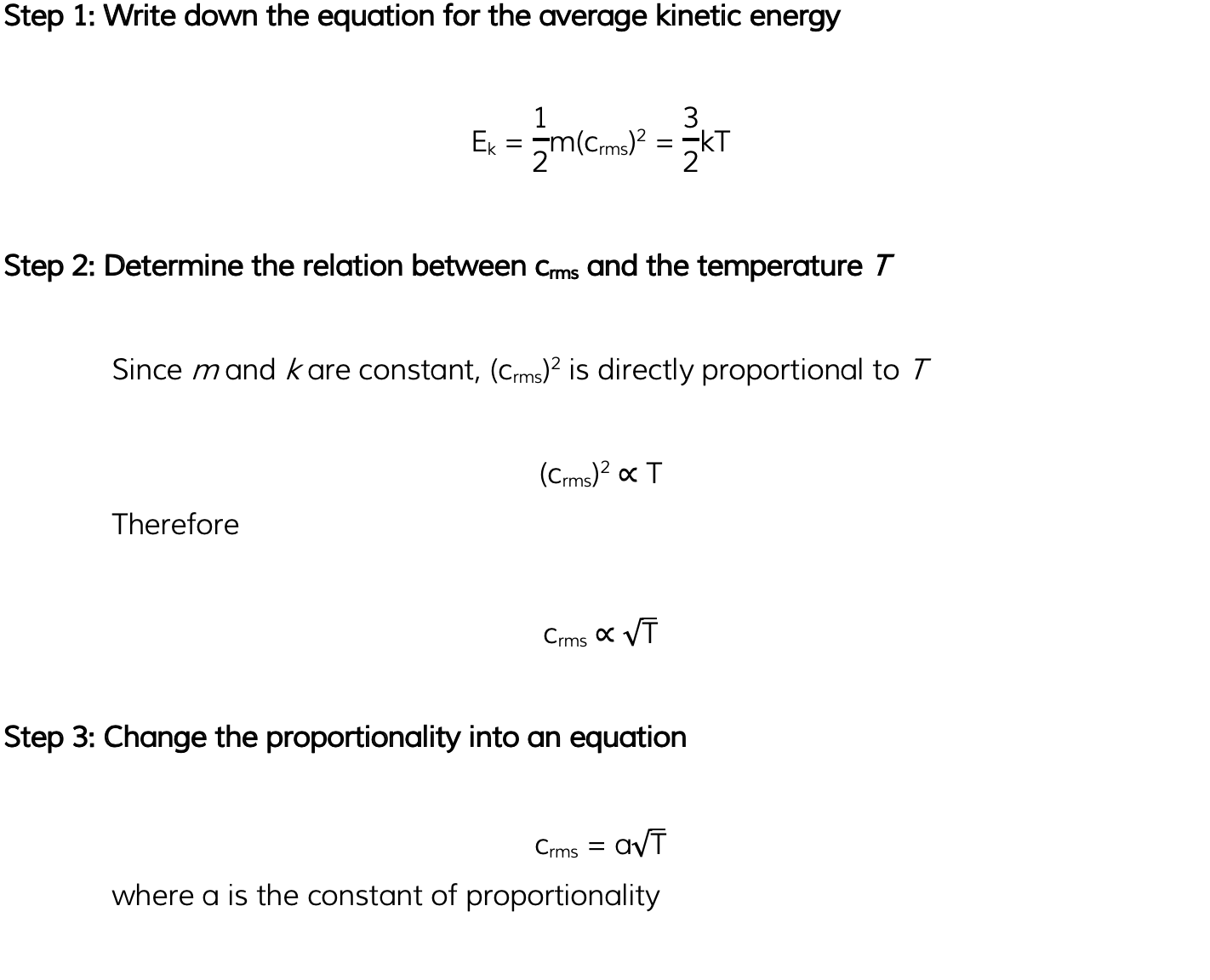Average Molecular Kinetic Energy
- An important property of molecules in a gas is their average kinetic energy
- This can be deduced from the ideal gas equations relating pressure, volume, temperature and speed
- Recall the ideal gas equation in terms of number of molecules:
pV = NkT
- Also, recall the equation linking pressure and mean square speed of the molecules:

- The left-hand side of both equations are equal to pV
- This means the right-hand sides of both equations are also equal:

- N will cancel out on both sides and multiplying by 3 on both sides too obtains the equation:
m(crms)2 = 3kT
- Recall the familiar kinetic energy equation from mechanics:

- Instead of v2 for the velocity of one particle, (crms)2 is the average speed of all molecules
- Multiplying both sides of the equation by ½ obtains the average molecular kinetic energy of the molecules of an ideal gas:

- Where:
- Ek = kinetic energy of a molecule (J)
- m = mass of one molecule (kg)
- (crms)2 = mean square speed of a molecule (m2 s-2)
- k = Boltzmann constant
- T = temperature of the gas (K)
- Note: this is the average kinetic energy for only one molecule of the gas
- To find the average kinetic energy for many molecules of the gas, multiply both sides of the equation by the number of molecules N to obtain:
Ek = Nm(c)2 =
NkT
- A key feature of this equation is that the mean kinetic energy of an ideal gas molecule is proportional to its thermodynamic temperature
Ek ∝ T
- The Boltzmann constant k can be replaced with

- Substituting this into the average molecular kinetic energy equation means it can also be written as:

Worked example
Helium can be treated as an ideal gas. Helium molecules have a root-mean-square (r.m.s.) speed of 720 m s-1 at a temperature of 45 °C. Calculate the r.m.s. speed of the molecules at a temperature of 80 °C.


Exam Tip
You can remember the equation through the rhyme ‘Average K.E is three-halves kT’.

